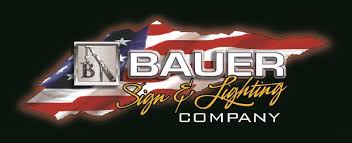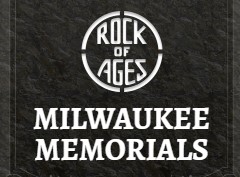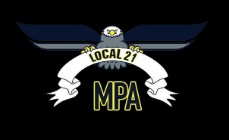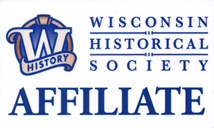Milwaukee Police Call Boxes
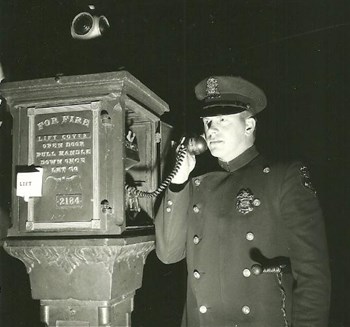
In the 1800’s, the Milwaukee Police Department had constructed “sentry boxes” for the roundsman or patrolman to utilize while they walked their beats in the neighborhoods. They were also referred to as “straw boxes” where officers could go to rest. The patrolman stored their rain gear, extra clothing, and lunches in these mini offices. The department needed a modern way of communicating with the beat officers so a communication system was installed in the sentry boxes that were similar to telegraph machines used in ships. This communication system allowed the patrolman to turn a dial corresponding to the crime taking place. The crimes listed were thieves, riot, drunkard, murder, robbery, accident. Depending on which selection the officer made, a signal went back to central station that dispatched help accordingly.
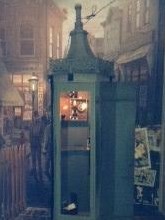
Exterior View of a Sentry Box
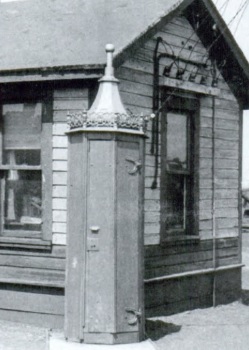
Sentry Box Located in the Rail Yards.
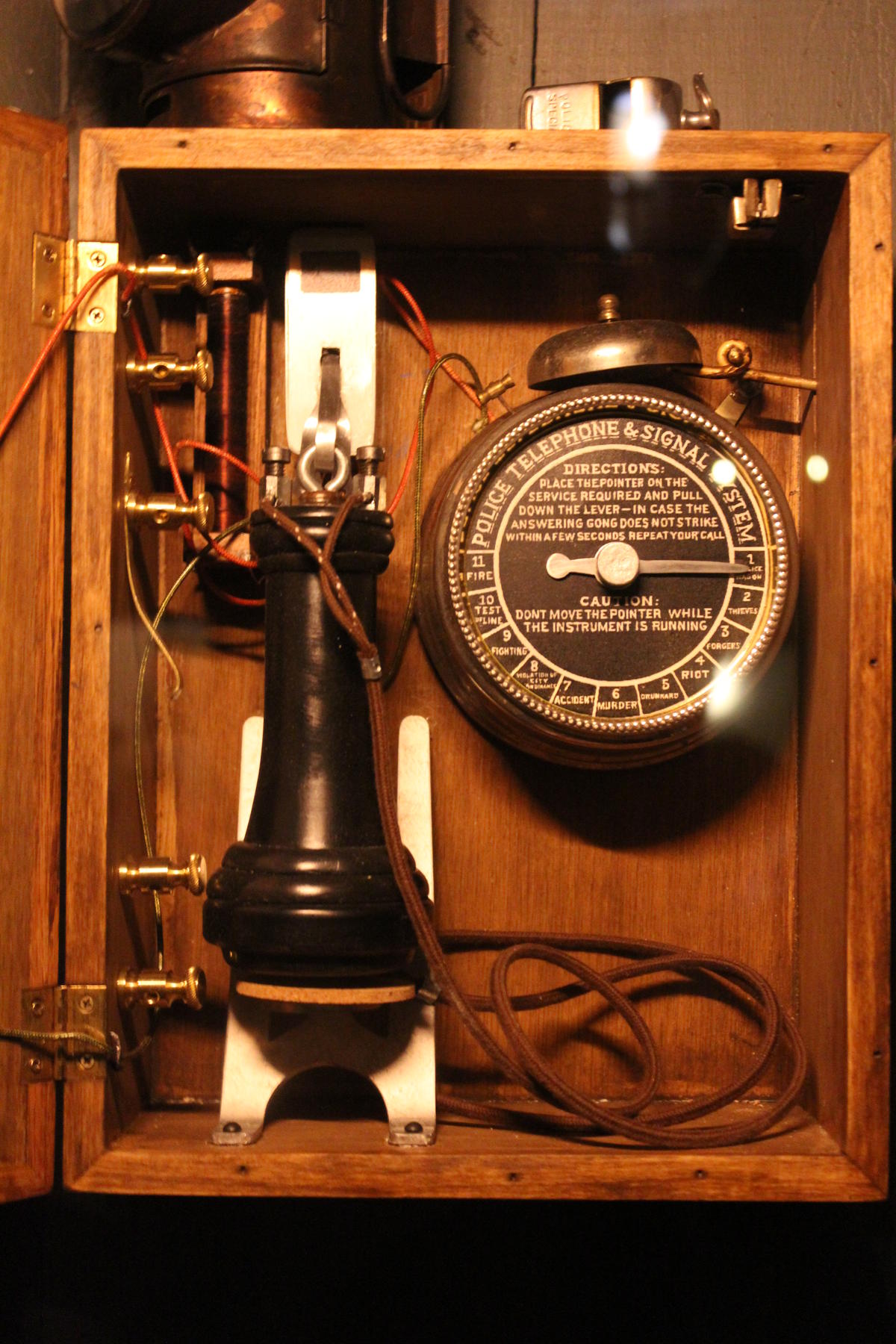
Overall view of the Police Telephone and Signal System
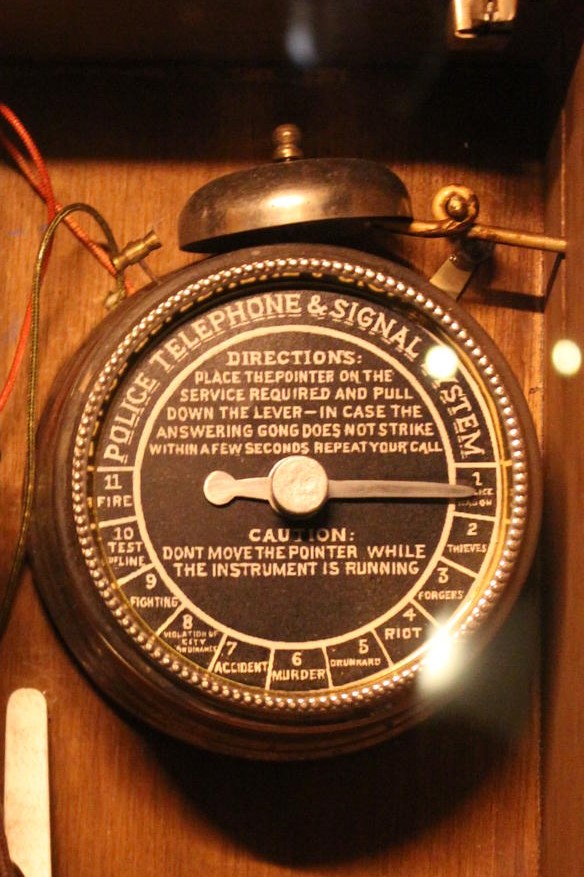
Close up view of the Police Telephone and Signal System
In the late 1800’s, the police department installed large boxes named “police call boxes” through the city.
In 1899, the department hooked up a single circuit to banks in the downtown area which would be the beginning of the hold up alarms. The banks that were connected in 1899 were First National Bank, Wisconsin National Bank, Marshall-Ilsley Bank, National Exchange Bank, Northwestern National Insurance Company, Marine and Fire Insurance Company Bank, and Milwaukee National Bank. Per the 1899 annual report, 193 patrol boxes and 5 private boxes were in service in the City of Milwaukee. The private boxes included the chief of police’s residence, and the mayor’s residence. The report listed the police communication system had 250 miles of telephone wire either underground or aerial.
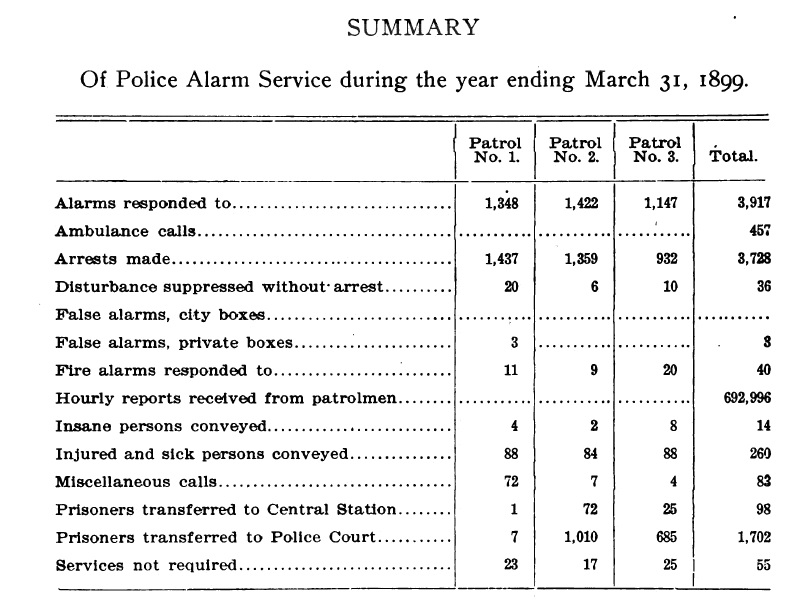
Below are examples of the different police call boxes in Milwaukee over the years:

Exterior view of pre-1911 Police Alarm Call Box
Photo Credit: Milwaukee Police and Fire Call Box
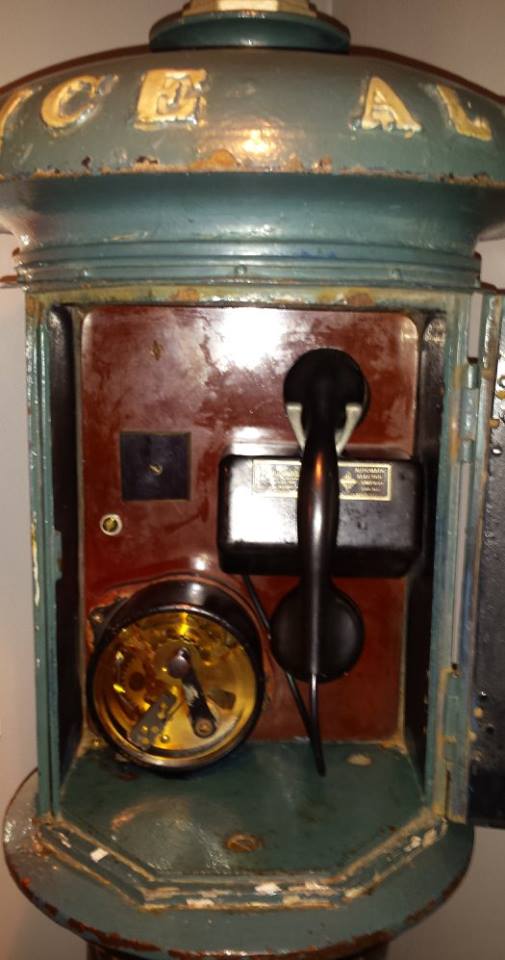
Interior view of Pre-1911 Police Alarm Box
Photo Credit: Milwaukee Police and Fire Call Box

Pre- 1911 style – Iron Police Alarm Post
On May 21st, 1908, the first iron police alarm post was installed at the corner of Grand Avenue and Third Street. Fifteen of these styles of iron police alarm posts were put up in the city in 1908. The wooden call boxes were being replaced with this style of alarm post as the wooden boxes were gradually rotting away. By 1909, 307 sets of telephones were in operation with the police alarm system. Of the telephone sets, 272 of them were in the patrol boxes while 35 of them were of the Iron Police Alarm Post style.
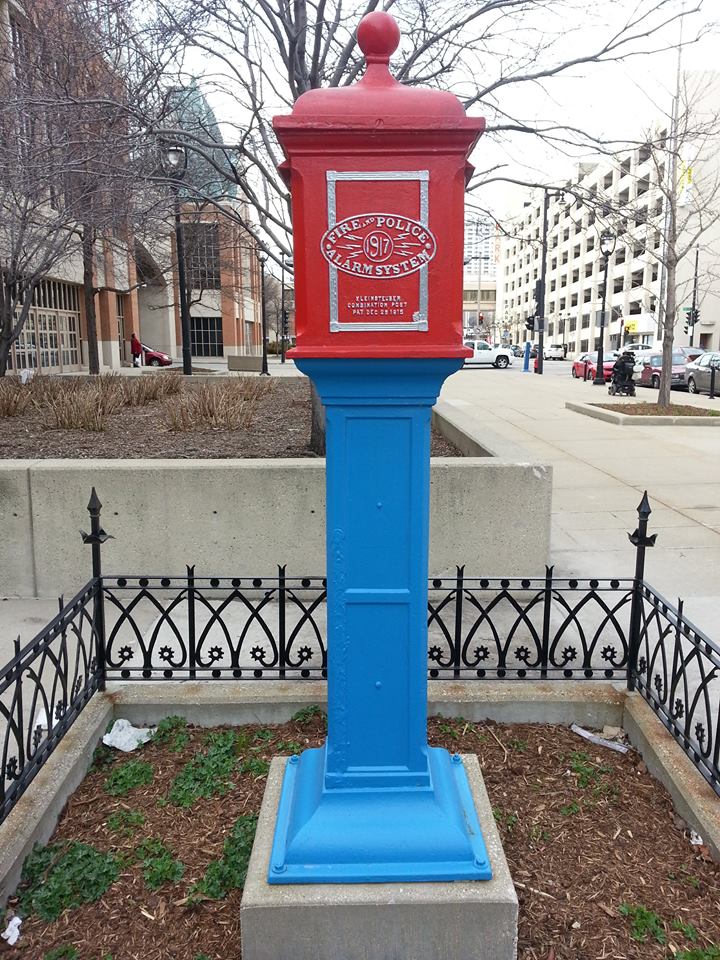
1917 Style Combo Fire/Police style

1921 Style Fire/Police Combo
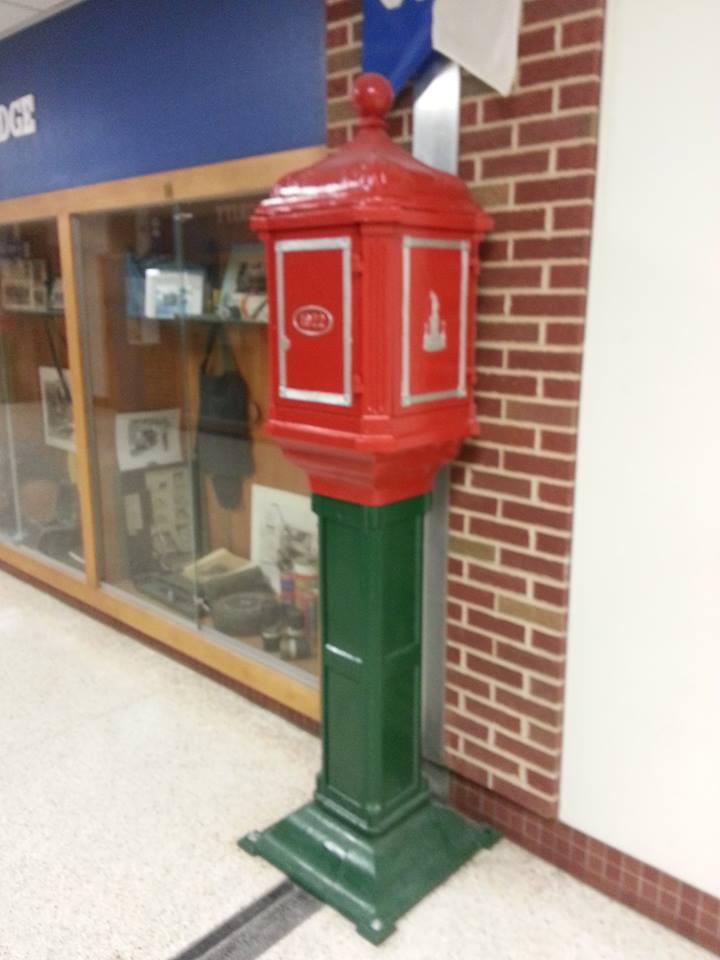
1922 style
Overall view of 1924 Style Fire & Police Alarm Post
Close Up View of the 1924 style
Current interior view of the Police Call Boxes in Milwaukee
OPERATION OF THE BOXES
One side of call box was for fire. You raised the white small box and pulled the fire alarm. Fire trucks showed up. When the fire alarm came into the dispatcher, each box had a number which is usually somewhere on the call box, normally below the white box. It was a four digit number. When the alarm was pulled it also sent a signal to the fire station and the alarm box number was printed out in a series of punches on a roll of paper. If the box number was 5432 is would punch out five holes, then fours holes, then three holes etc. Each fire station had a card for each fire box. That card would list which companies would respond on the first, second, third, fourth and fifth alarms. The fire dispatchers were in the Milwaukee city hall. When the alarm came in the dispatcher was announce the alarm on the radio. They would say Car 300 a box alarm of fire at 3rd and State and then indicate what engines were responding i.e. Engines 2-20-1, Ladder 2, rescue squad 1, and Battalion 1. There was a surprising amount of fires that came in from the boxes.
On another side of the box that was for the police. All cops were given a key. It had a phone that when you picked it up to spoke to someone at police HQ. There was also a device that was spring wound. There was a “hook” on it. If you pulled it once you got a paddy wagon. If you pulled it twice you were calling for assistance. The dispatcher who got the signal the same way the fire dept got it. The dispatcher would put out a call on the police radio that the “hook” was pulled at whatever location. These police box devices where spring would and periodically had to be “rewound”. I think it let the HQ know when it needed to be wound up. Sometimes the dispatcher would tell the beat cop or a squad to “rewind” the box at a certain location.
On the top of the box was a blue light that was on all the time. At night the beat cops could easily see where the call boxes were. HQ could make that blue light flash. That was a signal to the beat cop to call in at the call box. If the supervisor’s didn’t like you they could have you running all night chasing the flashing blue light. Beat cops had to call in to HQ for what was called an” hourly mark”. It was a way to see that the coppers were safe. If you missed a “mark” they could turn on a bunch of lights on in a certain area and send cars looking for you.
It was a pretty cool system that worked before the advent of portable police radios.
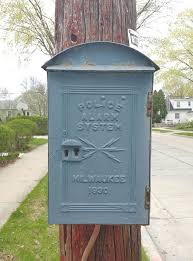
1930’s style
Photo Credit: Milwaukee Police and Fire Call Box
1930's Style Call Box- Overall View
In 2018, it was estimated that about 1,200 call boxes of different eras still remain in the City of Milwaukee.
History
Department
The Years
Profile






